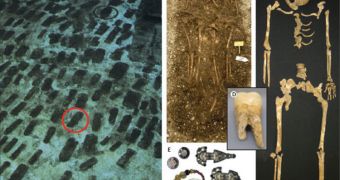An international team of investigators was recently able to confirm the discovery of the first-ever DNA samples from a person who was infected by the bubonic plague, nearly 1,500 years ago. Analysis of the remains revealed that the disease could always make a comeback, the group says.
The investigation was led and coordinated by the director of the Ancient DNA Center at the McMaster University in Canada, Hendrik Poinar. Details of the work were published in the January 28 issue of the esteemed international journal The Lancet, RT reports.
According to the study, the DNA samples the team had access to originate to the time of the first recorded bubonic plague outburst, called the Plague of Justinian. The crisis affected the Byzantine Empire between 541 and 542 AD, and is estimated to have killed up to 10,000 people a day in Constantinople alone, according to some historic accounts.
Scientists used the genome data they were able to extract from an ancient tooth to conduct a comparative analysis with similar information harvest from human remains left behind by two later pandemics. Overall, millions of people died in Europe during the Middle Ages because of the plague.
About half of all people living on Earth at the time of Justinian were wiped out by the first plague.
Two victims of the Plague of Justinian were discovered in an early medieval cemetery located in German Bavaria. In addition to recovering several artifacts from the burial site, researchers were also able to extract a tooth that still contained viable DNA. This then allowed them to conduct a genomic analysis on the sample.
The team was able to conclude that the bacterium Yersina pestis was responsible for all major plague outbreaks, including the Black Death (14th to 17h century) and the pandemic of the early 19th and 20th centuries.
However, the most significant discovery in this study is that the DNA of the Y. pestis organism from the first plague was different from the DNA of bacteria from other outbreaks. This suggests that the microorganism can evolve relatively fast, potentially allowing it to return to the world yet again.
“These results show that rodent species worldwide represent important reservoirs for the repeated emergence of diverse lineages of Y pestis into human populations,” the researchers wrote in their paper.

 14 DAY TRIAL //
14 DAY TRIAL //